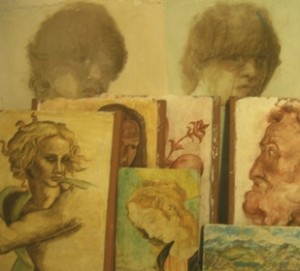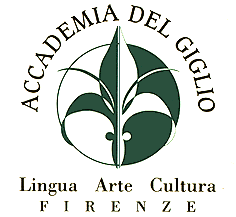The origins of the technique of fresco can be traced back to 30,000 years ago, to the murals found in the caves of Chauvet and Lascaux in France; and Altamura in Spain, dated to more than 15,000 years ago. The oldest known examples of fresco executed on wet plaster are found on the island of Crete and date back to about 1,500 b.C. In Italy this technique was practised from the 4th century b.C. as witnessed by the frescos at Paestum.
The first systematic treatment of this technique appears at the end of the 1300s in Cennino Cennini’s Libro dell’Arte. the term fresco, or buon fresco, refers to a picture executed on fresh wet plaster, using naturally occuring pigments suspended in water, without the addition of tempera.
The first step is to lay a rough layer arriccio) on the wet wall, mixed from two parts sharp river sand to one part slaked lime and, if necessary, water. Once this has gone off the preliminary drawing, the sinopia, is traced on the surface. The word takes its name from a natural earth colour from the Turkish city of Sinop. On this base a layer of plaster or intonachino is laid made up of fine sand, marble dust or sieved pozzolanic ash, lime and water, on wich the colours themselves are laid. The final touch using tempera is executed dry (a secco) and it is for this reason that in time these colours disappear, while the colours laid a fresco, thanks to a chemical process by wich they become incorporated into the lime and so we find them almost unaltered by time. This represents one of the major difficulties of this technique. Because the colours are not superimposed, as in other methods, but juxtaposed, errors are difficult to correct. What is more, pigments laid wet change colour as they dry and so this technique requires a great deal of experience from the artist. Furthermore, as only one section of the fresco can be worked on at a time, large works are divided into work days (giornate di lavoro) and it is always necessary to take the joins into account. To put this another way, in order to work on fresh plaster one can only add a small area every day and this section has to be joined seamlessly to the work already completed.
Towards the end of the 1400s the need to show perspective more realistically led to changes in the procedure. The sinopia for example was replaced by the cartoon. This was a drawing of the same dimensions as the fresco perforated along the lines of the design. This was placed over the intonachino and dusted with powdered charcoal or with sinopia to leave a tracing of the drawing. For large scale works this procedure was carried out every day with different sections of the cartoon until the overall design was complete.
Our school
For those who want to learn this ancient and marvellous technique, Accademia del Giglio based in Florence offers the possibility to attend either a 4-week fresco workshop or an intensive one-week seminar throughout the year. For more infos please write to info@adg.it or call +39 055 2302467 or visit this page.








Commenti recenti